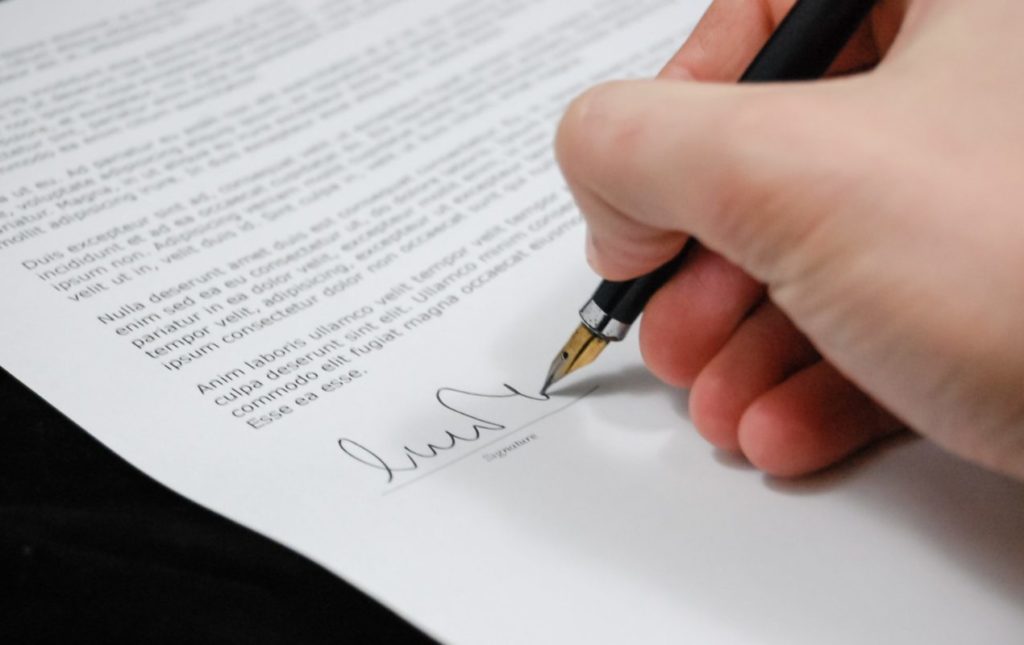Your Step-By-Step Guide for Effective Follow-Up

According to statistics, salespeople close 2% of sales during the first point of contact. If you’re not following up on the leads you meet at trade shows, conferences, webinars, or networking events, you’re missing out on 98% of sales opportunities.
Follow-up, and how you go about doing it, is what makes you better at sales than the next person. In this guide, we’ll walk you through how to follow up with prospects appropriately in order to cultivate strong business relationships and grow sales.
How to Follow Up Prospects In Various Business Scenarios
Ian Loew, the founder of Lform Design, posits that customers don’t make purchasing decisions in haste. The process flows slowly through different stages; it pays to be the prospect’s source of helpful information. Here’s how to follow up with prospects in various business scenarios:
1. After Conducting an In-Person Meeting
Your prospect may be considering other products and meeting with your competitors around the same time that you are in contact with them. A competitor will beat you to the deal if you don’t act fast.
Remember: 35-50% of sales go to the vendor that responds first. Send the prospect an email thanking them for taking the demo or setting aside time for the meeting. Your goal should be to be the first to respond and provide the most valuable information to the prospect.
Mention the key takeaways from the meeting: it could be a prospect’s accomplishments or the hurdle they’re facing in their business goals. Doing so shows that you have listened to their challenges and care about helping them. It also lets you segue into how your products help solve the client’s problems.
Here is a simple template for a follow-up email after the in-person meeting:
Dear [prospect name],
Thank you for making time to get a first-hand feel for how [solution] works. I appreciate hearing that your business is facing [pain points]. You’d be glad to hear that [solution] helps with [benefits].
I’ve attached a video of how [solution] helps solve your problems. Find also attached a case study of [client name] — a brand that used [solution] to overcome [challenges].
Please let me know when we can have a follow-up meeting to dive into our [solution] features in greater detail.
Looking forward to talking soon,
[Your name]
2. After You Met at a Conference
When you meet a prospective client at a conference, networking event, or trade show, you don’t have the time to get to know each other well. Perhaps you exchange business cards so that you have the prospect’s email address and name, which is essential for personalizing your message to them later.
The essence of the follow-up should be to remind them who you are and reiterate the value your product brings to the table. You can introduce your product based on the problem they have mentioned.
If they didn’t mention their problems, reference something you have in common: a hobby, background experience, or interest. People tend to form close bonds with people with similar interests, so this might entice the lead to engage.
Here’s an example template:
Hi [prospect name],
So glad we got to meet yesterday at the [event name]. I really enjoyed learning about the growth trajectory of your [business] — it was so inspiring.
You mentioned that you’re looking for [the solution or offering]. My consultancy is trusted by [mention reputable brands], and we’re ready to help.
I wanted to follow up with you to see if you’d be open to a meeting to discuss more about our services and accomplishments.
Thanks again!
[Your name]
If you attend a lot of trade shows and events, a contact management app such as Contacts+ can help you keep a list of your new connections, contact information, and hobbies in one place. It organizes your contacts, scans business cards, and keeps your data clean and updated, so you don’t have to perform routine clean-ups.
3. They Filled Out a Form On your Website
After a lead fills out a contact form, it’s essential to follow up quickly. In order to stay on top of all follow-ups, email workflow automation will come in handy.
With email marketing software, you can configure a workflow to trigger a post-submission email. The lead may not convert on the first follow-up — it typically takes multiple contacts across different channels. For this reason, you have to create a cadence to remain in touch with the prospect and maintain top-of-mind visibility.
Here’s how email software can nurture leads with a post-submission cadence:
- Send an instant post-submission email and capture the lead’s details into your marketing CRM tool.
- Harness customer details from social media pages to spur personalization.
- After 24 hours, send a separate follow-up email to qualify the lead further.
- A nurture email sequence (triggered by customer action) for six weeks or until the prospect converts. Send a reminder to call the lead 24 hours after every email. You can set a task to do so in your CRM.
- A call or email to “break up” with prospects that have not converted after six weeks or the predefined nurture period.
4. The Prospect Downloads a Lead Magnet
If a lead agrees to hand over contact details for an eBook or any other lead magnet, send an immediate email to thank them for downloading the content. Take advantage of this opportunity to grow your email list or newsletter subscribership. Here’s a sample thank you email:
Hey [prospect name],
Thank you for downloading our [content name]. We hope you find it helpful and resourceful in enhancing your [business practices].
If you want to explore [your offering], subscribe to our weekly newsletter, and we’ll deliver them to your inbox every Tuesday. Click here to subscribe.
Happy reading!
[Your Name]
Create an automated nurture sequence like the one we discussed above. A specific action should trigger the email sequence — for example, lead magnet downloads.
5. The Prospect Wants to Put Deal On Pause
The purpose here is to rekindle the prospect’s interest — the deal hasn’t collapsed yet, but the prospect put it on hold for some reason.
There could be a lot of different reasons why the decision has been placed on the back burner. It could be something that is out of the prospect’s hands, like a lengthy approval process, change in ownership, internal politics, and other urgent things on their plates.
Start where you left off and say something like:
Hello [prospect name],
Last we chatted, you requested that I reach out in [month] to see if you’re ready to move forward with this. Is now a good time to schedule a demo?
Happy to work around your schedule and make it easy to find a time that is convenient for both of us.
Talk to you soon!
[Your name]
6. Competitor Tempting the Prospect
“We’re still looking at a couple of other products, but yours is top on our list.”
When a customer drops that comment, there’s something about other competitors that’s making them hesitate to move forward with your business.
Perhaps it is to do with a feature your competitor offers, and you don’t. But sometimes, the sales pitch could be the issue. Maybe you didn’t emphasize your top features enough during your prospecting. In this case, go back to the drawing board and reevaluate the client’s problem. Find out if there’s a unique selling point that you didn’t mention during prospecting.
If you have one, send the client a demo video to rekindle their interest in your product. Use case studies to show how the feature has helped other companies sidestep the problem the client is having. There’s still time to close the deal with the client.
Follow Up Like a Pro
These are some of the follow-up scenarios that you’re most likely to encounter in your business endeavors. Keep in mind that effective follow-up is all about timing and messaging. As your prospects grow, you may want to look into email marketing software to ensure your follow-up is at the most opportune time.





